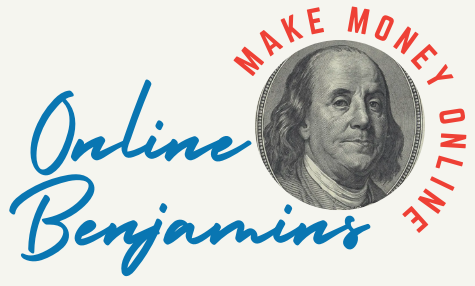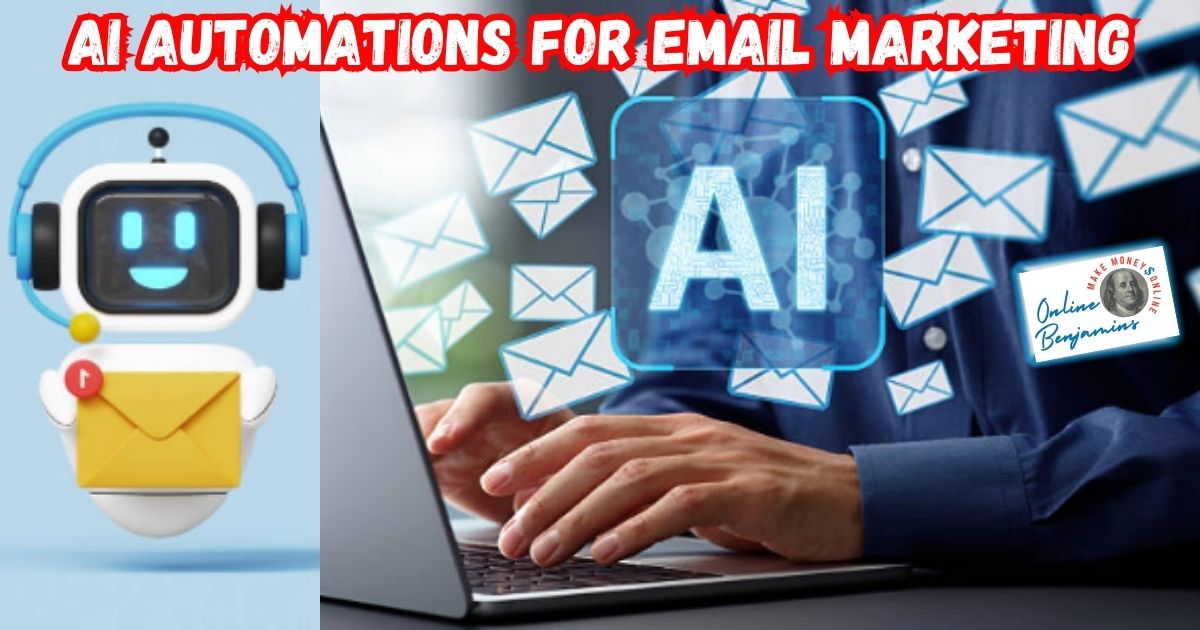AI-powered email marketing automation is changing the way marketers connect with subscribers. With AI, I can save time while making my messages more personal and effective. Instead of relying on generic email blasts, I now have access to tools that learn from my subscribers’ behavior and preferences. This means I can send the right message to the right person at the right time and see real results in terms of engagement and conversions.
QUICK LOOK: – Features of AI-Powered Email Marketing Automation
- Personalization: When I use AI-generated recommendations, my emails instantly feel more relevant. For example, after a customer buys running shoes, AI can automatically suggest socks, water bottles, or other sports gear based on their interests.
- Smarter Subject lines: Crafting the perfect subject line is challenging. AI tools can use language data and past performance to predict which words are most likely to grab attention.
- Automated Segmentation: For example, AI can automatically put people into groups like “active shoppers,” “new subscribers,” or “at risk for churn” based on a wide range of behaviors and traits. This makes it much easier to target the right group with the right message.
- Send Time Optimization: AI can figure out when each contact is most likely to read and respond to emails. I can schedule a single campaign, and the platform will send each message at the optimal moment for every subscriber.
- Automated Workflows: AI can track customer actions (like abandoning a cart or making a purchase) and automatically trigger the right email sequence. For example, if someone leaves products in their shopping cart, AI can send a gentle reminder with personalized product suggestions and maybe even a special offer.
- Advanced AB Testing: With AI, I can run lots of microtests and automatically pick the top-performing version for each audience segment. This fast-tracks the path to higher conversions and audience satisfaction.
- Content Generation & Optimization: Some AI systems can even write the email content itself. I can enter prompts or select preferences, and AI will generate different versions of the message to match my subscribers’ needs. AI also reviews my drafts for mistakes, tone consistency, and suggests ways to improve clarity and persuasiveness.
Understanding AI in Email Marketing Automation
Adding AI to email marketing might sound complicated, but the core idea is simple. AI, or artificial intelligence, lets computers process huge amounts of data and make decisions based on it. In my email marketing, this translates to smarter targeting, better message timing, and content that feels like it was written for each individual.
The market for AI in email marketing has grown fast. Businesses of all sizes now use AI for everything from list segmentation to personalized promotions. According to Statista, spending on AI marketing tech is growing every year, showing how many companies are seeing positive results.
As this technology spreads, it’s also getting smarter, constantly adjusting to new trends and email user habits. Whether you’re experienced or brand new to marketing automation, AI-powered platforms can give a real boost to your campaigns and help you track down actionable insights about your audience.
Getting Started with AI-Powered Email Marketing
Jumpstarting your work with AI-powered automation is much more straightforward than it used to be. Most modern email marketing platforms, like Mailchimp and HubSpot, now include AI features right out of the box. My first step was to look at my current tools and see which features are available. If you are just getting started, finding a platform that links up with your CRM or ecommerce system is super important so your data stays organized and accurate.
Here are a few key terms you’ll often run into:
- Segmentation: Grouping subscribers by shared traits or behaviors.
- Personalization: Customizing messages, subject lines, or offers for each recipient.
- Predictive Analytics: Using past actions to forecast what subscribers might do next.
- Dynamic Content: Changing email content based on the reader’s profile or actions.
Learning these basics helped me feel more in control when exploring platform settings and testing new features. Familiarizing yourself with these concepts smooths the way for a more successful adoption.
Key Features of AI-Powered Email Marketing Automation
AI brings in a lot of next-level cool features that can make my campaigns more effective and less time-consuming. Here’s how I use AI in my routine marketing activities, and why each feature matters.
Personalization That Feels Human
Generic emails rarely work. AI can pull content, product suggestions, and even images based on a subscriber’s previous purchases, browsing habits, or demographic data. When I use AI-generated recommendations, my emails instantly feel more relevant. For example, after a customer buys running shoes, AI can automatically suggest socks, water bottles, or other sports gear based on their interests.
Personalization also extends to local offers or time-sensitive promotions. AI systems spot patterns and trigger emails that truly match what subscribers care about, so engagement rates climb.
Smarter Subject Lines
Crafting the perfect subject line is challenging. AI tools can use language data and past performance to predict which words are most likely to grab attention. I’ve found that subject lines recommended by AI tend to boost open rates by making each recipient feel like the message was written just for them. Tests with AI-tuned subject lines have shown up to 10% higher opens in some of my campaigns.
Automated Segmentation
Instead of spending hours creating contact lists for different campaigns, I let AI sort subscribers into smart segments. For example, AI can automatically put people into groups like “active shoppers,” “new subscribers,” or “at risk for churn” based on a wide range of behaviors and traits. This makes it much easier to target the right group with the right message.
Dynamic Send Time Optimization
AI can figure out when each contact is most likely to read and respond to emails. I can schedule a single campaign, and the platform will send each message at the optimal moment for every subscriber. This is a big deal. Some people prefer reading emails early in the morning, while others open them late at night. AI send time optimization helps my emails avoid the clutter and land right when people are paying attention.
Automated Workflows for Every Scenario
AI can track customer actions (like abandoning a cart or making a purchase) and trigger the right email sequence automatically. For example, if someone leaves products in their shopping cart, AI can send a gentle reminder with personalized product suggestions and maybe even a special offer. On the flip side, if a customer just bought a product, AI can suggest related items or ask for a review after enough time has passed.
Advanced AB Testing
AI-powered tools can run dozens of experiments in the background to find the best email designs, content, or subject lines. I used to do this manually and could only manage a few variations. With AI, I can run lots of microtests and automatically pick the top-performing version for each audience segment. This fast-tracks the path to higher conversions and audience satisfaction.
Content Optimization and Generation
Some AI systems can even write the email content itself. I can enter prompts or select preferences, and AI will generate different versions of the message to match my subscribers’ needs. AI also reviews my drafts for mistakes, tone consistency, and suggests ways to improve clarity and persuasiveness. This helps me save loads of time and reduce errors.
By letting AI preview my content and make quick edits, I can focus more on strategy and creativity rather than painstaking editing.
What to Consider Before Getting Into AI Email Marketing
Using AI in email marketing can be a game changer, but there are a few things I always keep in mind:
- Data Quality: AI is only as good as the data it learns from. I make sure my lists are up to date and cleaned regularly for better personalization and segmentation.
- Tool Integration: The best results come when my AI-powered system talks to my ecommerce or CRM platform. If the tools don’t sync well, personalization might fall short, or messages could go to the wrong contacts.
- Maintaining a Human Feel: AI can automate a lot, but I always keep a personal touch by including my brand’s voice and responding to replies quickly.
- Testing and Fine-Tuning: Even with AI, I keep checking my open and click rates to spot trends and make improvements.
How AI Helps Overcome Email Marketing Challenges
While AI streamlines many tasks, it also helps with some typical pain points:
- Inbox Clutter: AI helps create more relevant content, so messages stand out in crowded inboxes.
- Manual Effort: Automated workflows and dynamic lists remove a lot of repetitive tasks from my daily routine.
- Subscriber Fatigue: With personalized send times and tailored content, my subscribers receive fewer, but more appealing emails, so they don’t get overwhelmed.
AI also helps with compliance. By tracking opens, unsubscribes, and bounces, automated systems handle opt-out requests and help keep your list squeaky clean without hours of manual review.
Advanced AI Email Marketing Tips
Getting results with AI is often about getting hands-on and trying different approaches. Here are a few advanced tips that have helped me make the most of automation:
Make the Most of Predictive Analytics: I use AI to forecast which subscribers might be ready to make a purchase or are at risk of unsubscribing, then target those groups with special offers or re-engagement messages.
Test Creative Elements: Swapping out layouts, images, and CTA buttons using AI-powered AB tests shows me what’s connecting with my list. Eye-catching visuals and smartly-placed calls to action keep my campaigns fresh every time.
Monitor Deliverability: Sometimes, automated systems can send too many emails or hit the spam folder. I keep an eye on deliverability stats inside my dashboard so issues don’t add up. Checking click-through and bounce rates helps me catch problems early and adjust quickly.
One more tip: don’t be afraid to experiment with different types of automated workflows and seasonal campaigns. AI systems can help you spot hot trends or audience shifts before your competitors do, giving your campaigns a real boost.
Real-World Scenarios: How AI Email Marketing Pays Off
In real life, I’ve seen AI-powered campaigns drive way higher engagement rates than bulk email blasts. For example, an online store I worked with used AI to send cart abandonment reminders. The AI also suggested accessories based on the shopper’s previous purchases, which led to more completed sales and higher average order values.
B2B companies can benefit as well. I once set up AI-driven email campaigns for a software company that used predictive analytics to identify leads that were ready for a demo. Their sales team got warmer leads, and conversion rates improved noticeably.
Even nonprofits and educational institutions are making the most of AI by sending personalized event invitations or donation appeals at just the right moment. This makes communication both effective and respectful of the subscriber’s interests.
- Ecommerce: Personalized deals and product suggestions keep customers coming back and increase lifetime value.
- SaaS and Service Businesses: Sending follow-ups, onboarding tips, or check-in notes at the right time supports customer success.
- Event Marketing: AI can identify the best time to send reminders and personalize invitations based on job role, location, or past attendance.
Frequently Asked Questions
Starting with AI-powered automation brings up a few common questions:
What do I need to get started with AI email marketing?
You’ll need an email platform that includes AI features, plus a clean list of subscribers and basic goals for what you want to achieve. Most popular platforms offer user-friendly setups.
Will AI replace human marketers?
Not really. AI is a tool that takes care of repetitive or data-heavy tasks, but real creativity and brand voice should always come from you. It’s all about using AI to give a boost to your productivity and results, not replacing yourself.
How do I make sure AI recommendations are accurate?
Focus on data quality and train your system with enough customer information. Reviewing results regularly lets you spot mistakes and make corrections quickly.
Achieving Success with AI Email Marketing
Embracing AI-powered email automation has helped me reach more people, boost engagement, and streamline my daily workflow. The key is to stay curious, try out new features, and keep refining my approach. If you’re ready for more personalized, effective email campaigns, AI-powered automation can help you achieve those goals while saving you time along the way. So jump in, experiment, and see how AI can take your email marketing up a notch.
Check Out Our Most Recent Articles:
- The Role Of Advertisements In Monetizing Content

- Video Content: 6 Tips for Boosting Engagement On Social Platforms

- A 4 Phase Guide to Creating Platform-Specific Content

- Analyzing Social Media Metrics For Content Success

- The Impact Of AI On Content Personalization

- How To Build A Social Media Engagement Strategy in 7 Steps

Wishing You Much Success in Growing Your Email Marketing,

- onlinebenjamins.com
- thebeachangler.com
- thesinnerinthemirror.com
- Facebook: Online Benjamins
- Twitter: @onlinebenjamin1
- Instagram: dotcomdinero
- YouTube: Online Benjamins
Rex
P.S. If you have any questions or are unsure of anything, I am here, and I promise I will get back to you on all of your questions and comments. Just leave them below in the comment section. Follow me on Twitter: @onlinebenjamin1, Instagram: dotcomdinero, and Facebook: Online Benjamins.
Hi,
Thanks for stopping by and congratulations for taking the first steps to building your own online business. I’ve been in business both offline and online since 1997. I would consider it an honor to help you build your business. Father of 3, life long outdoorsman with an education in Genetics and Economics. This site is about cutting through the BS and finding the real opportunities in the online world. I look forward to working with you.



